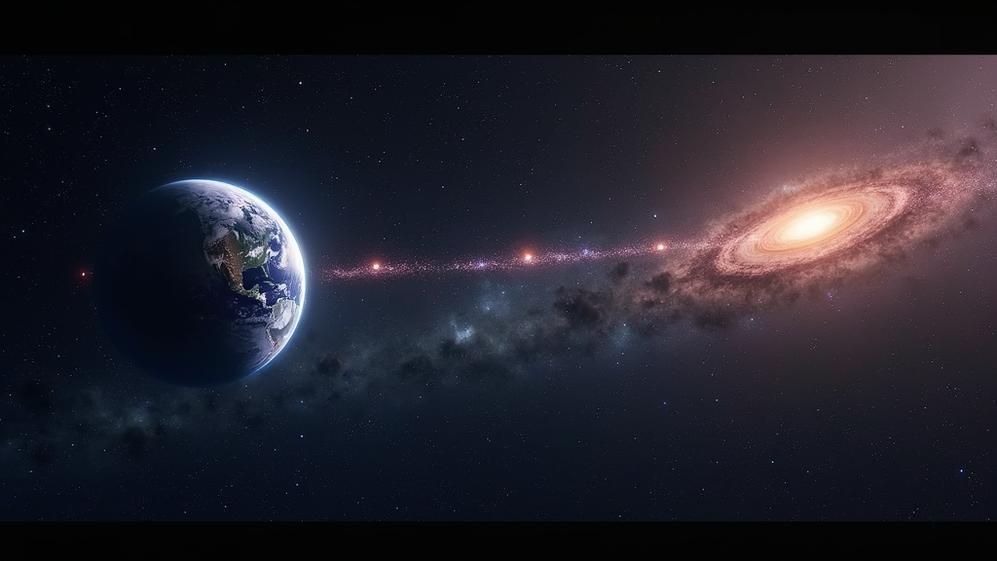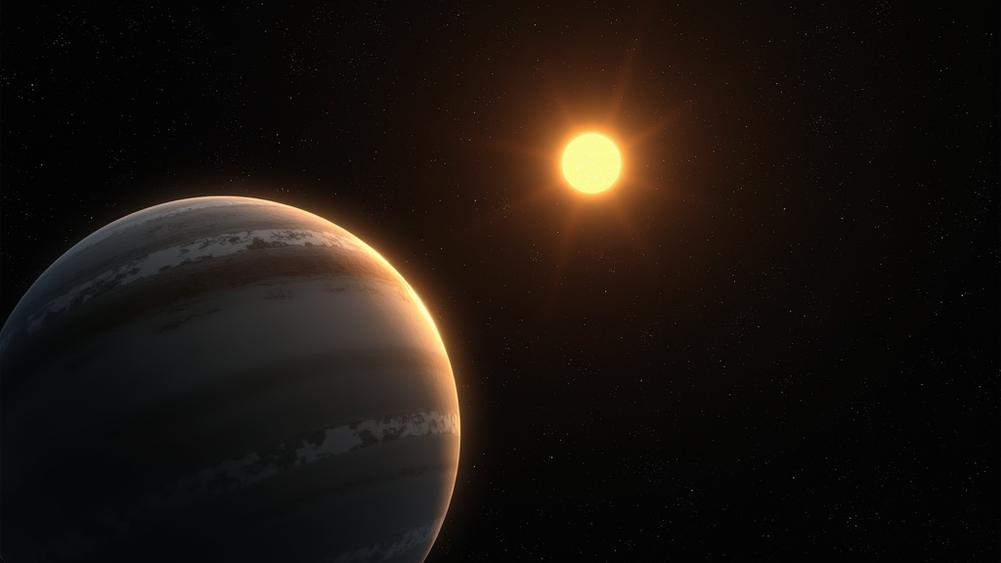Kepler-452b: Definition, Distance, Life, Water, Oxygen
Kepler-452b is a potentially habitable exoplanet discovered in 2015. The planet orbits a Sun-like star every 385 days within its habitable zone. Kepler-452b measures 60% larger than Earth and could potentially support liquid water on its surface. The exoplanet is located approximately 1,400 light-years away from Earth. This distance translates to roughly 8.4 quadrillion miles or 8.23 quadrillion kilometers. Kepler-452b appears as a bright blue-green dot when viewed from afar. The planet has a rocky surface with a thick crust and an atmosphere containing dense clouds and mist. Active volcanoes dominate the landscape beneath the cloud cover. No civilization has been found on Kepler-452b. Future missions like the James Webb Space Telescope and Transiting Exoplanet Survey Satellite will provide more information about the exoplanets’ atmospheres and potential biosignatures.
What is Kepler-452b?
Kepler-452b is a potentially habitable exoplanet discovered in 2015. Earth’s “cousin” orbits a star like the Sun every 385 days within its habitable zone. Liquid water could exist on its surface. The rocky planet measures 60% larger than Earth. Kepler-452b offers insights into possible life beyond Earth.
Kepler-452b orbits its host star, Kepler 452, at a distance of 60% of the Earth-Sun distance. The planet completes an orbit every 385 days, existing within the habitable zone where liquid water potentially exists. Kepler 452 is 6 billion years old, 10% larger in diameter than the Sun, and shines 20% brighter.
Kepler-452b shares several similarities with Earth, earning it the nickname “Earth’s cousin.” Kepler-452b likely has a rocky surface composed of rock and metal similar to Earth. The planet’s size, orbit, and location within its star’s habitable zone contribute to its potential for supporting liquid water and life. Kepler-452b formed about 6 billion years ago, coinciding with our solar system’s formation. The planet’s larger size results in stronger surface gravity and a thicker atmosphere than Earth. Scientists estimate Kepler-452b’s surface temperature to be around 130°C (265°F).
How far away is Kepler-452b from Earth?
Kepler-452b exists approximately 1,400 light-years away from Earth. Light-years measure vast cosmic distances. One light-year equals about 9.461 billion kilometers or 5.88 billion miles. Kepler-452b’s distance translates to roughly 8.23 quadrillion kilometers or 8.4 quadrillion miles from our planet. New Horizons spacecraft would take over 26 million years to reach Kepler-452b at its current speed.
Astronomers express Kepler-452b’s distance as 550 parsecs, an astronomical unit equivalent to the light-year measurement.

How long would it take to get to Kepler-452b?
Kepler-452b lies 1,400 light-years away from Earth. Current chemical rockets would take 26 million years to reach the planet. Advanced propulsion systems could reduce travel time to 1,000-2,000 years. Light-speed travel would take 1,400 years. Voyager 1, Earth’s fastest spacecraft, travels at 0.006% light speed, requiring 70,000 years for the journey.
Current spacecraft technology increases travel time to Kepler-452b. The New Horizons spacecraft, traveling at approximately 47,400 kilometers per hour (29,453 miles per hour), would take 30 million years to reach the exoplanet. Some estimates suggest a shorter journey of 26 million years at New Horizons spacecraft speed. Hypothetical high-speed spacecraft traveling at 10% of the speed of light would complete the journey in 2,000 years for Earth observers.

What does Kepler-452b look like?
Kepler-452b appears as a bright blue-green dot from afar. The terrestrial planet has a rocky surface with a thick crust. Kepler 452-b is 60% larger than Earth in size. The planet’s atmosphere contains thick clouds and mist. Volcanoes are active on the surface. Kepler 452-b is a potentially habitable world that resembles Earth when viewed distantly.
Kepler-452b possesses a thick atmosphere composed primarily of carbon dioxide and nitrogen. Thick, misty clouds cover the planet’s surface, containing water vapor and sulfuric acid droplets. The dense atmosphere creates a strong greenhouse effect, resulting in higher surface temperatures than Earth.
Kepler-452b’s surface is covered with active volcanoes. The planet’s larger mass and density contribute to ongoing geological activity. Mountains, valleys, and volcanic features dominate the landscape beneath the cloud cover.
Is Kepler-452b habitable?
Kepler-452b orbits within the habitable zone of its Sun-like star. The planet is 60% larger than Earth with potentially suitable conditions for life. Jon Jenkins describes it as “the closest thing we have to another Earth.” Kepler-452b likely has a rocky composition, thick atmosphere, and receives substantial energy. Habitability remains unconfirmed despite promising indicators.
The atmospheric composition of Kepler-452b is unknown. Scientists speculate it might contain nitrogen, oxygen, and carbon dioxide like Earth’s. Kepler-452b’s pressure is likely higher than Earth’s due to its larger size and mass. Kepler-452b’s climate would be more extreme than Earth’s, possibly due to a stronger greenhouse effect.
Kepler-452b orbits its star every 385 days at a distance of 1.63 astronomical units. The Kepler-452b star, Kepler-452, is a G-type star similar to our Sun. Kepler-452 is about 6 billion years old, providing a stable environment for potential life development over billions of years.
Kepler-452b’s gravity is estimated to be 2-3 times stronger than Earth’s. The stronger gravity would impact the planet’s habitability for Earth-like life forms. Further studies are needed to determine if Kepler-452b can support life.
Does Kepler-452b have water?
Kepler-452b potentially contains water in its atmosphere. Water presence remains unconfirmed. The planet orbits a Sun-like star every 385 days. The surface temperature of 265 K (-8°C, 17°F) suits liquid water existence. Jenkins et al. (2015) suggest rocky composition with a thick atmosphere. Kane et al. (2016) infer water vapor presence in the atmosphere.
Kepler-452b’s surface conditions remain unknown due to its distance of 1,400 light-years from Earth. Current technology limitations prevent direct observation of the planet’s surface. Kepler-452b has a diameter 60% larger than Earth and a surface gravity 2-3 times stronger. The increased gravity likely results in a more massive atmosphere, influencing water distribution.
Kepler-452b’s atmosphere plays a role in determining water presence. A substantial atmosphere regulates temperature and protects the surface from harmful radiation. Theoretical models propose Kepler-452b’s atmosphere contains nitrogen, oxygen, and carbon dioxide. Simulations indicate surface temperatures ranging from -10°C to 50°C (14°F – 122°F), allowing for water in various forms. The presence of liquid water depends on the specific atmospheric composition and pressure.
Does Kepler-452b have oxygen?
Kepler-452b’s atmosphere remains unknown due to lack of conclusive evidence. Oxygen presence is possible but unconfirmed. Thick atmosphere and clouds may cover the planet’s surface, masking potential atmospheric components. Direct atmospheric analysis has not been conducted. Future missions like TESS and JWST are needed to characterize Kepler-452b’s atmosphere and determine oxygen presence.
What’s inside Kepler-452b?
Kepler-452b’s composition likely mirrors Earth’s. The planet’s rocky interior contains iron and silicates. Its mass, 60% larger than Earth’s, indicates a solid surface. A thick, active atmosphere envelops the planet. Liquid water potentially exists on the surface. Scientists suspect these conditions could support life. Further research is needed to determine precise atmospheric and surface compositions.
The second possibility is a sub-Neptune classification. Kepler-452b likely contains a rocky core at its center. Models indicate an ice mantle surrounds this core. A thick gaseous envelope envelops the solid layers. The planet’s mass is less than Neptune’s, supporting this theory. Kepler-452b’s solid core consists of iron and silicates. An ice layer exists between the core and surface. The thick atmosphere surrounds the rocky body.
Are there animals on Kepler-452b?
Scientists do not know if animals exist on Kepler-452b. Earth-like conditions on Kepler-452b suggest potential for life. Current technology limits direct study of the planet’s surface and atmosphere. Researchers lack sufficient evidence to confirm life forms. Future space telescopes aim to search for biosignatures on Kepler-452b.
Land animals require a stable surface to thrive. Kepler-452b has a diameter 60% larger than Earth, indicating it possesses a solid surface capable of supporting terrestrial life forms. The planet’s stronger gravity due to its larger mass would influence the evolution of animal species. Animals on Kepler-452b would likely develop more robust or compact body structures to adapt to the increased gravitational pull. The planet’s estimated surface temperature of -8°C (17.6°F) presents a colder environment than Earth’s average. Temperature differences would impact the types of animals inhabiting Kepler-452b. Extreme-condition organisms like tardigrades demonstrate the possibility of life adapting to harsh planetary conditions.
What is the surface of Kepler 452b?
Kepler 452b’s surface remains highly uncertain. Scientists estimate a rocky composition with active volcanoes due to its mass and size. Thick, dense clouds likely cover the planet. Surface pressure is estimated at 2-5 times Earth’s. Researchers base assumptions on indirect observations and theoretical models, lacking direct surface observations.
Kepler-452b likely features active volcanoes on its surface. The planet’s size and mass suggest volcanic activity is present. Kepler-452b’s surface is potentially covered by an ice layer. The planet’s location within the habitable zone of its Sun-like star allows for the possibility of liquid water on the surface.
Kepler-452b has a thick atmosphere covering its surface. The atmosphere is believed to be composed of carbon dioxide, nitrogen, and water vapor. Kepler-452b exhibits misty clouds when viewed from space. These clouds are likely composed of water vapor and sulfuric acid, obscuring surface features.
Kepler-452b has a surface gravity 60% stronger than Earth’s. The estimated surface temperature of Kepler 452b is 265 K (-8°C, 17°F). Artist’s concepts depict Kepler-452b as an Earth-like exoplanet with a rocky surface and active volcanoes. These visualizations show a misty, cloud-covered planet orbiting its sun-like star within the habitable zone.

